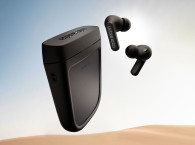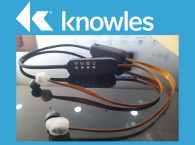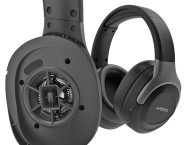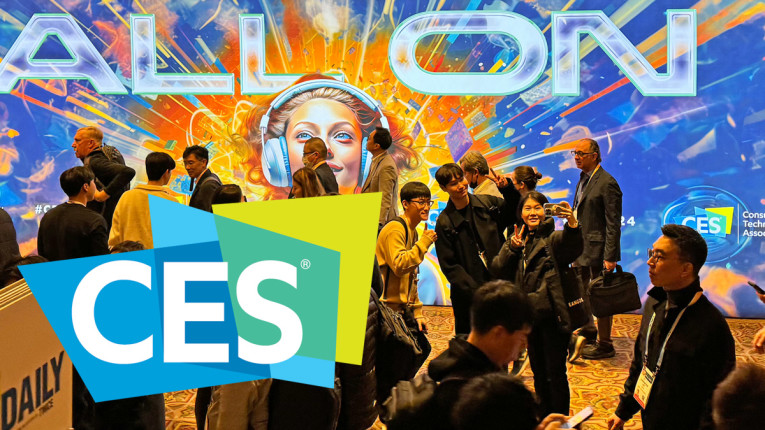
Vibrant Business Environment
#CES2024 was the best in a long time. I said that in my First Impressions article last week, and as we distance ourselves from the whirlwind of those hectic six show days, the stronger that feeling grows. And one of the reasons has to do with the fact that important technologies are already making a difference in the audio products that we will soon see in the market - while many others are about to.
At CES 2024, there was a reason to visit and talk to ODM/OEMs - they are much more interested in leading by example, and not afraid to embrace cutting-edge technologies. We saw that directly at many suites, where ODMs had the best prototype demonstrations of advanced concepts, some of which were ready-for-production concepts. This sends a strong message of incentive for inventors and developers, and companies investing more in R&D.
The other reason why CES 2024 created a vibrant environment has to do with the fact that the supply chain seems to have recovered from the pandemic and post-pandemic crisis. There are still tension factors and some nervousness in committing to more risky components, but all major players we talked to are proactive in reassuring the brands and doing anything to support incoming projects, to avoid losing business.
It obviously helps that, despite inflation, the US economy is doing so well. As the Consumer Technology Association (CTA) announced prior to CES 2024, projected retail revenues for the US consumer technology industry will grow 2.8% in 2024 to $512 billion (up $14 billion from 2023). This signals an uptick in consumer spending on technology products and services, according to CTA’s One-Year Industry Forecast.
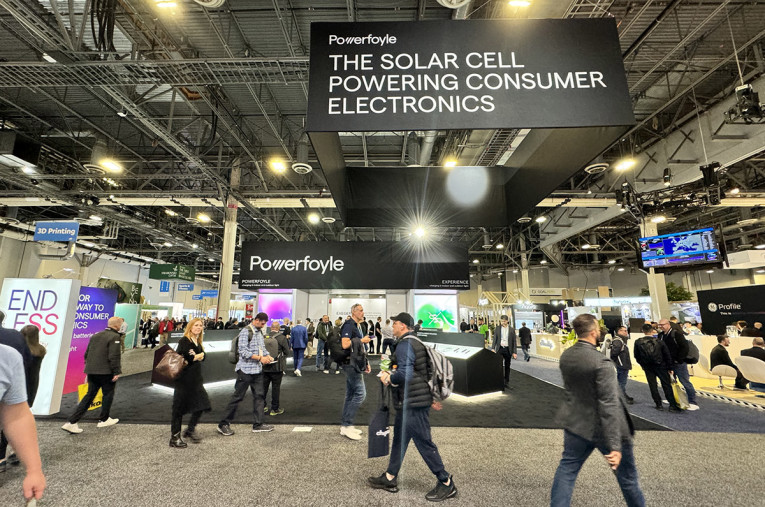
Leading by Positive Example
Exeger finally had its "major league" debut at a consumer technology trade show. The Swedish company could have made an even larger impact in the market if it wasn't for the fact that - unexplainably - its inexperienced team decided to cancel the scheduled press conference, part of the CES Media Days. As a result, Exeger has not yet made the headlines in US mainstream media, even though most of the technology media is now paying attention. Tip: In 2025, prepare for the press conference focusing on the consumer's message and capture the attention of all national TV networks (you don't get many chances like this).
Exeger had a large booth in the Venetian Expo hall, close to many other key technology providers such as Nordic Semiconductor and Qorvo, which is significant. And they had a lot to show at the booth. The key message now is: Your consumer electronics products can now be powered by light and run continuously. As Giovanni Fili, the CEO and founder of Exeger stated: "Self-powered consumer electronics will become the new standard."
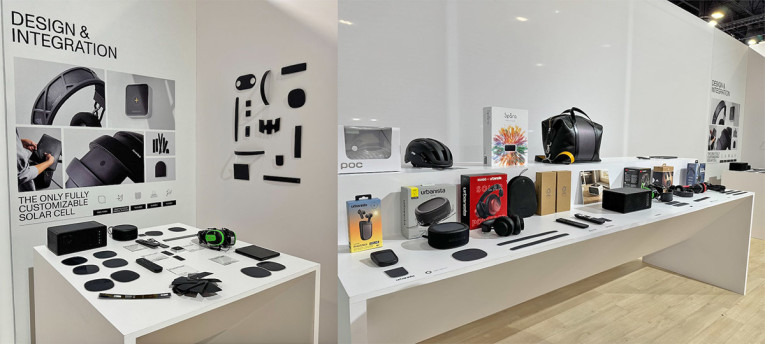
Just prior to CES, Exeger confirmed that its production of Powerfoyle solar cell material is now ongoing at Exeger's second factory, Stockholm II, one of Europe’s largest solar cell factories in terms of annual production capacity. Exeger is continuously investing in the industrialization of the two factories and higher production capacity yields, enabling it to respond to large volume production as required by the consumer electronics industry.
More importantly, Exeger confirmed that the optimization of higher quality Powerfoyle indoor solar cell membranes resulted in a 20% boost in efficiency. This is key in many product categories that today rely solely on disposable batteries, such as remote controls. These higher efficiency solar cells will have major environmental benefits. As an example, since launching in 2022, Powerfoyle Indoor membranes have been integrated into Ohsung Electronics, Omni Remotes, and Tech4Home remote controls with more products of this type being revealed during 2024.
In 2023 Exeger signed partnership deals with several world-renowned brands, including 3M, TP Vision (the company responsible for the design, manufacturing, and sales of Philips-branded TV and audio products), the world’s largest computer peripherals manufacturer, and other major global consumer brands. At CES 2024, the company's booth had an extensive display of those new light-powered products, while in a more private visitor's area it displayed the complete ecosystem of product integration components from dozens of partners. An interesting gallery also showcased existing and hypothetical product concepts, including an interesting bag partially covered with Powerfoyle that we would like to see quickly available in the market.
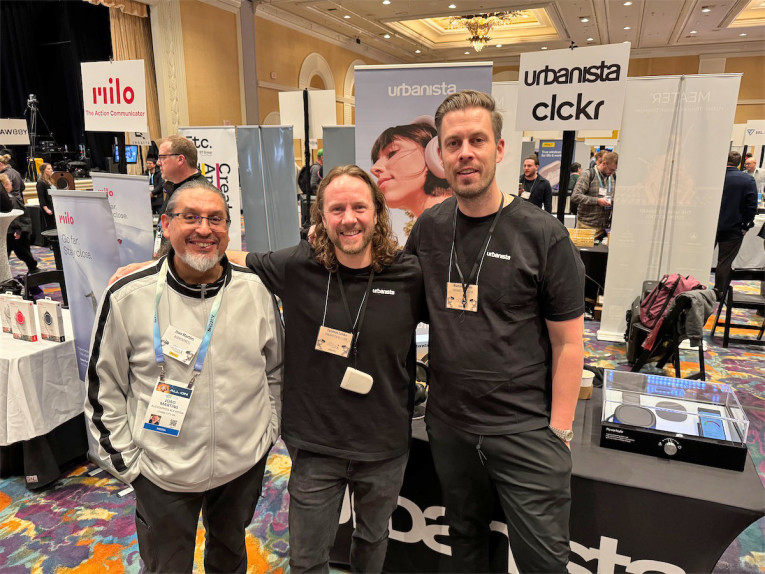
Already at the CES press meeting events, we had the chance to spend time with the Urbanista product team, which was showcasing the second generation of Urbanista Los Angeles headphones and Urbanista Phoenix TWS earphones, as anticipated here. The announcement is another great testimony of the outstanding work that STRAX/Urbanista is doing on the engineering and product management front, quickly embracing the evolution of light-harvesting technology, and incorporating lessons learned from existing designs.
In a short time, Urbanista completely improved and renewed these two flagship products, building on the fact that they were the world’s first to launch light-powered headphones and true wireless earbuds with Powerfoyle solar cell technology (launched in 2021 and 2022, respectively). We should also highlight the fact that Urbanista was the first brand to commercially release a Powerfoyle-equipped portable speaker (the Malibu), which helped to inspire Tymphany to create a self-powered - also displayed on the Exeger booth.
At the Exeger booth, 3M was another company showcasing the world's first self-charging protective communications headset that converts outdoor and indoor light. Importantly, 3M partnered closely with Exeger to optimize the Powerfoyle solar cells by using 3M's film technology. In addition to light-harvesting capabilities, the 3M PELTOR WS ALERT XPV Headset (yes, that's the name of the product!) includes many advanced features that allows workers to stay safe, connected, and productive. Philips also showcased two self-powered products, a television remote and sports headphones at the Exeger booth, while Voxx also made an announcement under the RCA brand, to develop solar-powered OTC hearing aids and accessories.

WiSA E
My second highlight was not as visible to a CES visitor but I'm glad that we booked an hour to visit the WiSA Technologies demonstration suite, which was clearly focused on meetings with developers from major CE brands, including TV and STB manufacturers.
audioXpress has extensively covered the multichannel wireless audio space (we just published an extensive report in our December 2023 issue) and WiSA Technologies is a familiar name in that key strategic space. Wireless multichannel is not easy to do, and the Oregon-based company knows it well. They have tried for years with the superior (and relatively successful) WiSA HT technology, but now are focused on grabbing the volume market with WiSA E for all home entertainment systems, covering the typical 2.1 and 5.1 applications, all the way to immersive setups.
WiSA E uses a combination of hardware modules (for receivers, such as speakers, mainly) but it is mostly about embedded software. At CES 2024, the demonstrations of WiSA E highlighted its scalability, showing how this software-based approach to multichannel audio paves the way for new product categories, while it offers additional benefits for consumers. The difference here is that WiSA Technologies is basically saying that manufacturers will be able to offer consumers the option to "activate multichannel audio functionality" and connect their WiSA E-enabled devices to any WiSA E-enabled speaker.
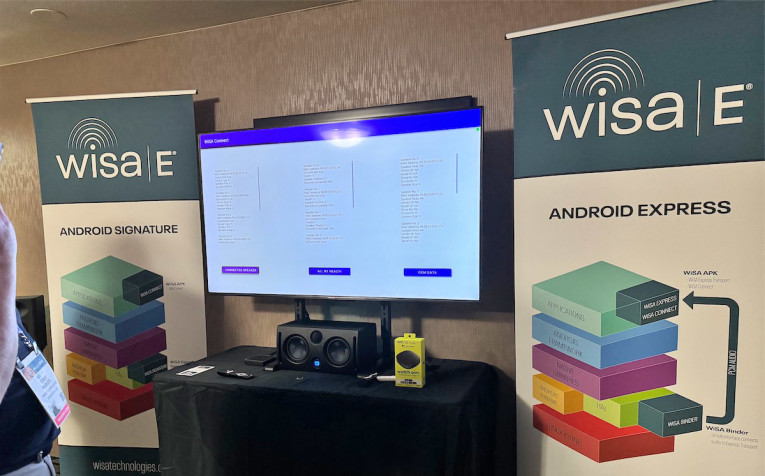
At the end of CES 2024, WiSA Technologies announced that three additional leading display companies have signed a 5-year WiSA E license. Using a software approach to enable wireless multichannel audio features offers multiple advantages to both manufacturers and consumers. As an example, STB manufacturers are typically hesitant to add multichannel audio due to the additional cost of the required hardware. They are now able to load the WiSA E’s software transmitter both on the production line or on demand as a field upgrade to existing platforms. And the end consumer has the option to activate the software at any time.
To the overwhelmingly positive reaction of CES visitors, the company demonstrated WiSA E in TVs, soundbars, projectors, streaming media hubs, and set-top-boxes, to show how the software can be quickly embedded into devices with little or no additional hardware costs. The demonstrations included WiSA E embedded onto a low-cost Android streaming media stick enabling 2.1 high-quality multichannel audio with no change to existing hardware, and WiSA E embedded into multiple HDTVs, enabling immersive wireless speaker systems.
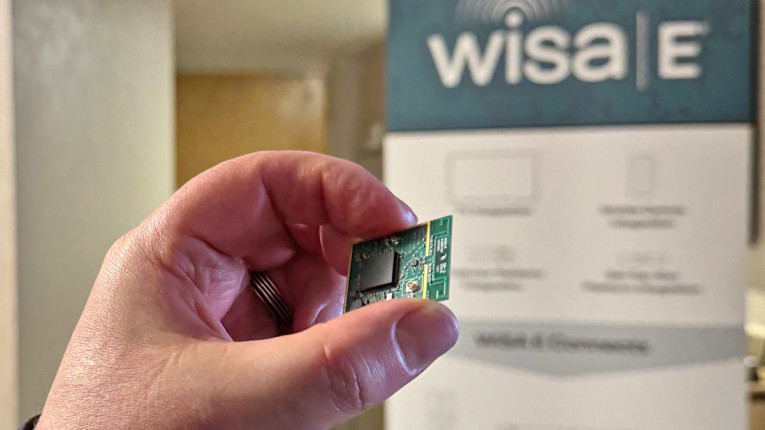
As anticipated, the demonstrations included WiSA E embedded onto the Amlogic S905X4 application processor, which is tailored for all types of smart TVs and connected applications. But WiSA Technologies is already working with many other common platforms and SoCs that are implemented in these mainstream products. WiSA E software is now available on multiple SoCs and several different Wi-Fi chips from MediaTek, Realtek, Qualcomm (Snapdragon), Espressif, and Amlogic.
The company also showed WiSA E embedded into an Android mobile phone and tablet demonstrating the ease to switch audio sources to streaming video quality audio to speakers with WiSA E modules. Also, part of the demonstration included the WiSA Connect software that enables users to connect any source to any speaker at any time. The software keeps track of all the WiSA devices within a home, managing connectivity and communication between clients and speakers.
"The positive market reaction to our software has exceeded our expectations, and the enthusiasm for our licensing model has been extraordinary. We anticipate continuing to add new display licensees and fully expect the licensing model to extend into other A/V categories, such as set-top boxes," said Tony Ostrom, president of the Wireless Speaker and Audio (WiSA) Association.

The xMEMS Evolution
A third highlight for this year's CES had to be that of xMEMS Labs, the innovative company that stormed the personal audio market with its "solid-state True MEMS speakers" for TWS, earphones, IEMs, and headphones. xMEMS has more than 130 granted patents worldwide for its technology and its monolithic transduction architecture that implements both actuation and diaphragm in silicon has demonstrated the ability to produce outstanding microspeakers.
The company's remarkable success and aggressive go-to-market strategy has been well documented in audioxpress' extensive coverage. The advantages of these MEMS drivers are their uniformity and consistency, robustness, and not causing electromagnetic interference (EMI) over surrounding circuits and components. When implemented, xMEMS drivers have demonstrated to be exceptional for high-resolution audio reproduction due to its fast response across all frequencies and enabling better spatial translation due to its phase consistency (time domain accuracy).
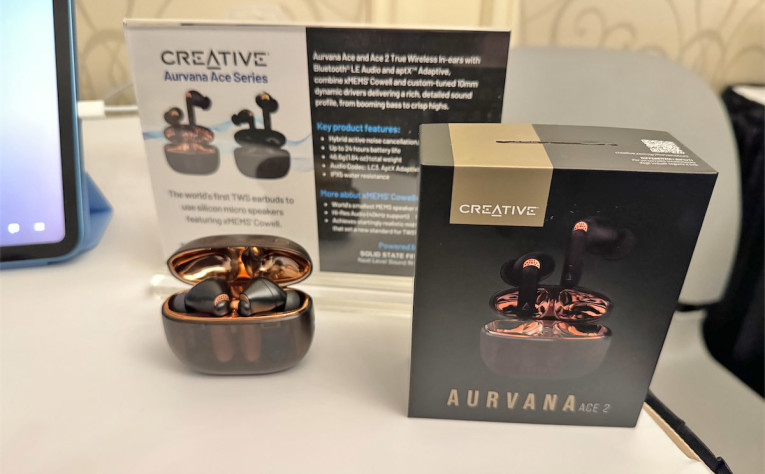
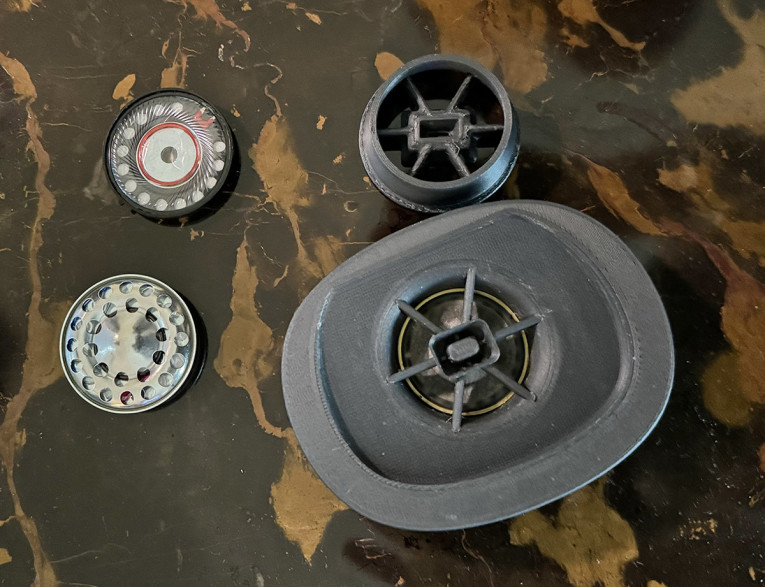
There are already multiple products on the market that attest to those unique properties, and at CES 2024 xMEMS demonstrated some of the most recent designs, such as the Noble Audio XM1 wired USB-C In Ear Monitors (IEMs), and the Falcon Max TWS earbuds featuring a hybrid arrangement with MEMS-based drivers. The other product on display was the true wireless earbuds with Hybrid Active Noise Cancellation (ANC).
And as I previously reported, there were multiple reference designs (that audioXpress will be reviewing) that will no doubt significantly contribute to the popularity of xMEMS drivers. One was the Spyglass Sleepbuds new reference design that leverages xMEMS' solid-state Cowell drivers and Skyline DynamicVent technologies to deliver noise blocking, noise-masking sound, and an industry-first vented mode for improved comfort. Another was the Presidio, a two-way, over-ear headphone reference design using a 35mm dynamic driver for bass and xMEMS Cowell or Montara Plus as a tweeter.
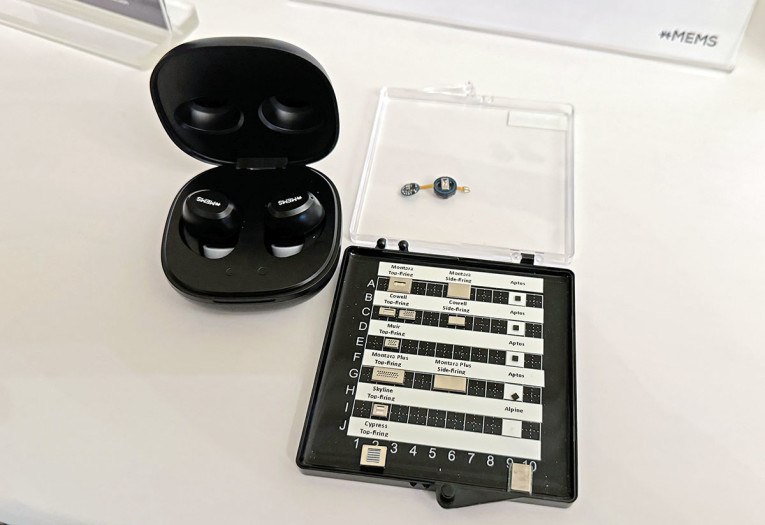

But the reason why I was anxious to visit the xMEMS suite at CES was mainly to see and hear the new Cypress drivers, which use ultrasonic amplitude modulation and are the first that truly promise to deliver superior active noise cancellation and audio augmentation applications. These were one of the most surprising announcements of the past year,and even more given that they are going to be available for sampling and new product designs at the end of 2024 - and in mass production in 2025 - as Mike Housholder, Vice President, Marketing & Business Development for xMEMS confirmed.
The promise for these new Cypress MEMS speakers is that they can achieve 40 times louder bass response on a single monolithic, miniaturized device, achieving well above the 130dB SPL at low frequencies, required for ANC implementations on TWS earbuds. And this groundbreaking performance by using ultrasound modulation technology, which apparently xMEMS Labs has successfully research and kept quiet for several years (even considering the multiple patents submitted), not only is it now implemented, it surpasses all expectations.
Of course, I was anxious to know if the Cypress ultrasound MEMS would be available for me to hear, and they were indeed. As Mike Housholder explained, the wired earbuds demonstration was purely to show that the concept works, and no attempt was made to showcase the exceptional dynamic levels that the drivers can achieve when required. My immediate impressions were honestly as positive as previous listening sessions I had with other existing products with xMEMS drivers - a very clean, fast and detailed response that surpasses expectations on familiar source material. I don't like to put words on these "impressions," but I can say that what I heard was good, very good.
I can only imagine what will happen when actual product developers start pushing these new-age drivers to the limits of the possibilities - which should finally power consistent ANC/transparency and audio augmentation applications. Very exciting!

Knowles Innovations
I'll make a final reference to what Knowles demonstrated at CES 2024. As usual, the company - again situated in the excellent Venetian lower levels Hospitality Suites - hosted more than a dozen demonstrations of voice and audio solutions for consumer audio, automotive and hearing health. There were more demonstrations of the Knowles range of acclaimed balanced armature (BA) drivers, which are at the heart of recently launched products like the Edifier NeoBuds Pro 2, Razer's Moray in-ear monitor (IEM) for streaming and gaming, and the JLab Epic Lab Edition earbuds (the first in the market to be tuned to the Knowles Preferred Listening Response Curve).
For new TWS Reference Design Kits, Knowles has partnered with well-known ODM manufacturers, including Fujikon, Grandsun, OBO, Risuntek and Siyoto. Those are mainly drop-in hybrid (BA/dynamic) TWS reference design kits, and the demos also included one full-range reference design developed with ODM partner XRound Audio for over-the-counter (OTC) hearing aids. Other reference designs from Bluetooth chip partners such as Qualcomm and Airoha allowed visitors to experience premium audio capabilities and explore hearing personalization with software solutions from Mimi Technologies, Audiodo, and SonarWorks.
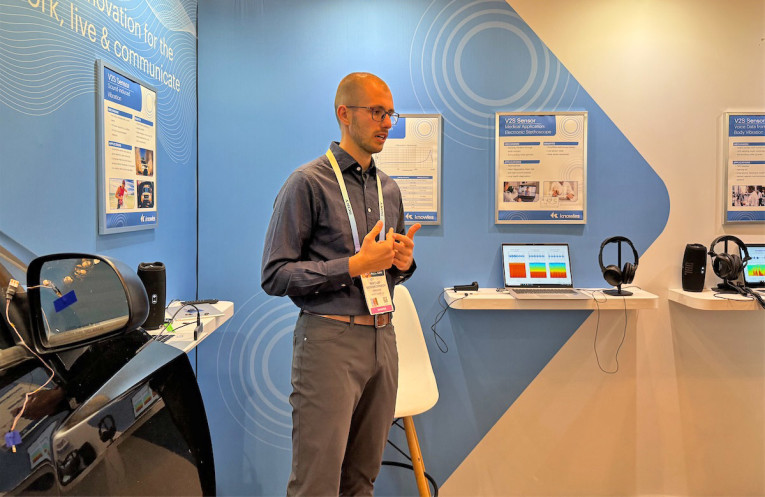
But the reason why Knowles quickly became part of this CES 2024 lasting impressions list was due to the company's recent investment in a new product category. As audioXpress has been documenting, the industry is increasingly combining vibration sensors (accelerometers) in TWS earbuds to enhance own-voice filtering and processing, and to improve audio separation filter applications. Holding a leadership position as a supplier of MEMS microphones to those applications, Knowles cleverly invested in jumping to a leadership position in this specific segment.
At CES 2024, Knowles introduced its Digital Vibration Sensor (V2S) for new applications across a diversity of markets, from consumer electronics, to automotive, mobility, and healthcare. Available in new iterations for consumer electronics and automotive-qualified packages, the new Knowles V2S sensors are small in size and are able to deliver a high signal-to-noise ratio (SNR) and large bandwidth, which makes it possible to transmit intelligible voice if required in extreme cases. The devices are also extremely robust and low power, which makes them a perfect complement to many existing industry algorithms and software solutions that leverage a vibration sensor. At CES 2024, among other companies, Knowles partnered with Alango to show the benefits to its SoundAround solution that captures and processes sounds from outside the vehicle without using external microphones.

I can say that all the demos I witnessed were extremely impressive and I was pleasantly surprised with the effectiveness in the different use cases implemented for the show by the Knowles engineering team. The capabilities of the V2S sensor for clear signal capture of voice in noisy environments are impressive and enables extreme applications even in smartwatches and tablets, not only earbuds. In hearing aids these sensors are key to eliminate self-voice and echo effects and their effectiveness will no doubt contribute to significant experience improvements in this field.
Equally impressive are the V2S possibilities in automotive, for emergency vehicle detection and voice command pickup in harsh environments with the robust design of V2S. Nikolay Skovorodnikov, Senior Manager, Applications Engineering MEMS microphones at Knowles, showed us an impressive helmet implementation and even the possibility to use the V2S to capture the human heartbeat and enable an advanced "digital stethoscope" concept.
As Saket Thukral, senior director of product line management at Knowles, stated, "the V2S is a robust vibration sensor that advances audio capabilities, redefining what’s possible in sound capture for automotive, hearing health, consumer, and other applications." The V2S also offers an ideal solution for OEMs and ODMs looking to add high-quality audio pickup while working with compact, battery-constrained designs, as the market is currently demanding. aX
This article was originally published in The Audio Voice newsletter, (#454), January 25, 2024.





